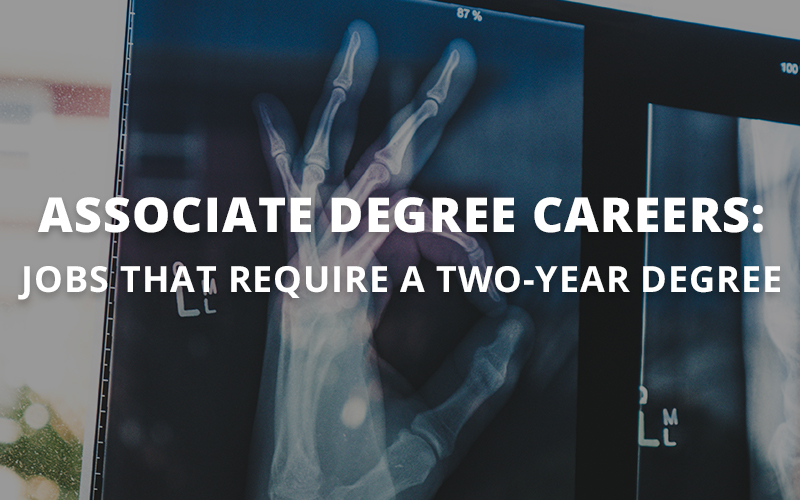Financial Aid
Easy Guide on How to Become a Pilot for an Airline in 2023
Whether you already have a private pilot license or are researching this career path, becoming an airline pilot requires various levels of certification and flying training that you must obtain before applying for a regional or commercial airline position.
In this article, we outline the Federal Aviation Administration’s (FAA) standards for becoming an airline pilot and provide step-by-step information on the career of a professional pilot.
What exactly does an airline pilot do?
An airline pilot is responsible for transporting crew members and passengers between locations.
They must navigate the plane’s flight path and manage all other aspects of its movement using specialized tools.
The captain (pilot in command) and first officer (second in command) work together in the cockpit to ensure a safe flight, from vehicle inspection and flight logs to precise takeoff and landing synchronization.
Multi-engine aircraft are flown by airline pilots who must be technically proficient.
They must deal with any mechanical issues that arise while the plane is in flight, as well as navigate the plane through bad weather.
Airline pilots must communicate with air traffic controllers and use radar to fully comprehend their flight path.
Must Read: Easy Steps on How To Become A Drone Pilot
What is the average time it takes to become a commercial airline pilot?
It may surprise you to learn that obtaining your private pilot license only takes a few months. Following that, it typically takes two years to accumulate the necessary amount of flight experience to become qualified to become an airline pilot.
During those two years of flying, you will gradually increase your hours and earn more certificates (described below).
Every pilot in the United States must have 1,500 hours of flight time before being hired as a pilot for an airline.
Is it necessary to have a college degree to become an airline pilot?
A college degree is not required to work as a commercial airline pilot.
A college degree may be advantageous if job opportunities dwindle because many airlines look favorably on them.
Pilots frequently obtain the following degrees:
- Engineering in Aeronautics
- Airport Management Aeronautical Science Aviation Management
- Joining the Air Line Pilots Association is a brilliant idea.
If you plan to attend college while also pursuing your pilot’s license, join the ALPA International ACE club.
By joining, you can begin to broaden your network, gain more insight into the field, and make it easier for yourself to find a good job after graduation.
How to Become an Airline Pilot
These stages describe the typical path to completing the necessary training and gaining experience to become an airline pilot:
1. Earn a bachelor’s degree from an FAA-approved institution.
Most major airlines require a bachelor’s degree in aviation or a closely related discipline when applying for positions as an airline pilot.
The most common path for students who want to become airline pilots is to enroll in an FAA-approved university where they can take aviation-related coursework to earn a degree while also beginning their pilot training.
With this path, you can directly achieve your ultimate goal of becoming an airline pilot.
The fact that the majority of FAA-approved colleges and universities include pilot training as part of their aviation programs is a significant advantage of attending one of these institutions.
They can offer students a variety of training tools, specialized facilities, and increased flight hour scheduling flexibility.
2. Get a private pilot’s license.
To obtain a private pilot certificate or pilot’s license, you must study fundamental flight techniques, aircraft movements, navigation, flight planning, and emergency training.
Once you have this certification, you can legally fly an aircraft.
Earning this certificate allows pilots to independently practice small plane flying.
3. Obtain an instrument rating
Flying for an airline necessitates the ability to read and use instruments.
Following the acquisition of your basic pilot’s license, you will need to learn how to use complex tools that guide an aircraft through various weather conditions and heights.
The National Airspace System and air traffic control are also covered in the pilot training for this certification.
4. Get a commercial pilot’s license.
A commercial pilot’s license allows pilots to fly people or cargo for a fee.
A pilot with this certification can work in search and rescue, passenger flights (such as corporate or tourism flights), and freight deliveries.
Pilots fall into this category if they want to be rated for every type of aircraft they want to fly.
They could add a multi-engine rating to their single-engine commercial pilot certificate.
5 Obtain a certificate as a flight instructor.
Many pilots choose to become flight instructors in order to gain more experience and flight hours.
Pilots can earn money while logging flight hours.
Most airlines require a certain number of flight hours before you can even apply to be a first officer.
Becoming a flight instructor is the quickest way to accumulate the necessary flight hours and experience to work as an airline pilot.
6. Include a multi-engine rating.
To fly the aircraft used by passenger airlines, pilots must obtain an additional rating in addition to their commercial license. The pilot must be able to control large aircraft with multiple engines.
Part of the training for this certification includes learning what to do in the event of a single-engine failure and operating these massive aircraft in all aspects of flight.
7. Gain flight experience and hours.
It would be preferable if you flew for many hours before becoming an airline pilot.
The FAA requires a pilot to have 1,500 total flying hours. You can accomplish this through training sessions, flight instruction, and working as a commercial pilot.
8. Obtain certification as an airline transport pilot.
The FAA’s highest license is an airline transport pilot (ATP) certification. Pilots must have more than 1,500 flying hours to obtain this certification.
Pilots must also log certain flight hours, such as pilot in command (PIC), night flying, and cross-country PIC.
To obtain an ATP certification, future airline pilots must also pass medical exams.
A pilot must pass a first-rate medical examination to serve as a pilot in command or second-in-command.
9: Attend an interview for a position as an airline pilot.
Once you have met all FAA requirements, you can look for work with a major airline. Because seniority is the basis for hiring on airlines, you’ll start as a first officer and work your way up to captain after at least two years.
Trending: How to get a job as a Software developer at Quantic IT Solutions
How much do airline pilots make?
The pay of an airplane pilot is determined by the size of the company, the type of aircraft, and seniority.
Airline pilots are paid for the number of hours they fly, up to 1,000 per year. The hourly rate is a factor in determining a pilot’s salary.
The national average for first officer base pay is $53,325 per year.
A commercial airline captain’s annual starting salary is $55,362.
Benefits for airline pilots include free travel, health insurance, paid time off, employee discounts, and a base salary.
Some businesses provide “buddy passes” that are either free or discounted to family members who purchase plane tickets.
What kind of work environment does an airline pilot have?
The majority of an airline pilot’s time is spent in a small, enclosed cockpit with one or two other members of the crew nearby.
They will work a variety of hours depending on the duration and number of flights on their schedule.
Pilots will conduct their operations from a location they consider to be their base, but they frequently fly for several days before returning home.
They may work late at night, on weekends, and for extended periods of time.
Pilots for airlines also take on leadership roles.
As captain or first officer, they are responsible for the plane, every passenger, and every crew member on their flight.
When a crisis calls for immediate action to ensure the flight’s safety, they must be at ease making decisions quickly.
Flying can take a pilot to many different locations both within and outside of their own country.
As a result, they must be willing to travel. Airlines pilots share an adventurous spirit as well as a love of aviation mechanics and travel. They can see the world through their work.
What is the best route to becoming an airline pilot?
You can choose from a variety of educational and training options to become an airline pilot.
The four most common career paths are as follows:
Learn to fly at a flight school.
A Part 61 or Part 141 flight school will provide you with the fundamental flight and navigation training that you require, depending on the level of FAA regulation.
These flight schools frequently offer adaptable programs with varying schedules and pacing.
A Part 61 training program may be more adaptable in its approaches, whereas a Part 141 institution has a strictly regulated teaching process.
Earn a college degree from an FAA-approved aviation program.
Training at an aviation college will supplement an associate’s or bachelor’s degree program in aviation.
You will finish your education with aviation-related coursework and hands-on training in flight mechanics, piloting, and navigation.
Participate in an airline cadet program.
Airline pilots may receive specialized training at aviation academies.
These academies are frequently associated with a specific airline and provide an organized career path to work for the company.
Those who train with the school may be required to complete various tasks within the airline or a subsidiary airline before being immediately promoted to a position as an airline pilot after completing their first training.
Some people decide to become pilots because they have the opportunity to serve in the military.
The Army and the Air Force are two branches of the United States armed forces that each have their own aviation training facility.
The Marines have the most comprehensive pilot training program.
Naval aviator programs are available for commissioned officers in the Navy, Marine Corps, and Coast Guard.
Training is included in this path as a result of your long-term dedication and military service.
Military training improves pilots’ tactical and emergency response abilities. Airline programs frequently place a high value on candidates with prior military flying experience.
Commercial pilots vs. airline pilots
Typically, airline pilots begin their careers as commercial pilots, gaining experience as flight instructors or charter pilots.
Commercial pilots are distinguished from airline pilots by the tasks they are assigned.
See Also: Job as a Heavy-Duty Equipment Mechanic in Inland Group of Companies
While commercial pilots transport passengers and cargo, conduct surveillance, and perform other flight duties associated with their job titles, airline pilots frequently work for a single regional airline.
An airline transport pilot certification would necessitate additional training and flight hours for a pilot with a commercial pilot license.
Conclusion
If you want to pursue your dream of becoming an airline pilot, you now have all the information you need to get started.
You’ll soon be able to fly as a licensed pilot if you put in the time and effort.
Join our 77,000+ students and never miss our members’ exclusive Jobs Abroad and Scholarship updates.
Gain Access to our Private Group
See what others are reading:
- Easy Steps on How To Become A Drone Pilot
- Easy Steps on How To Become A Seller On Amazon
- How to secure a job as a Software engineer at Bloombase Canada Inc










